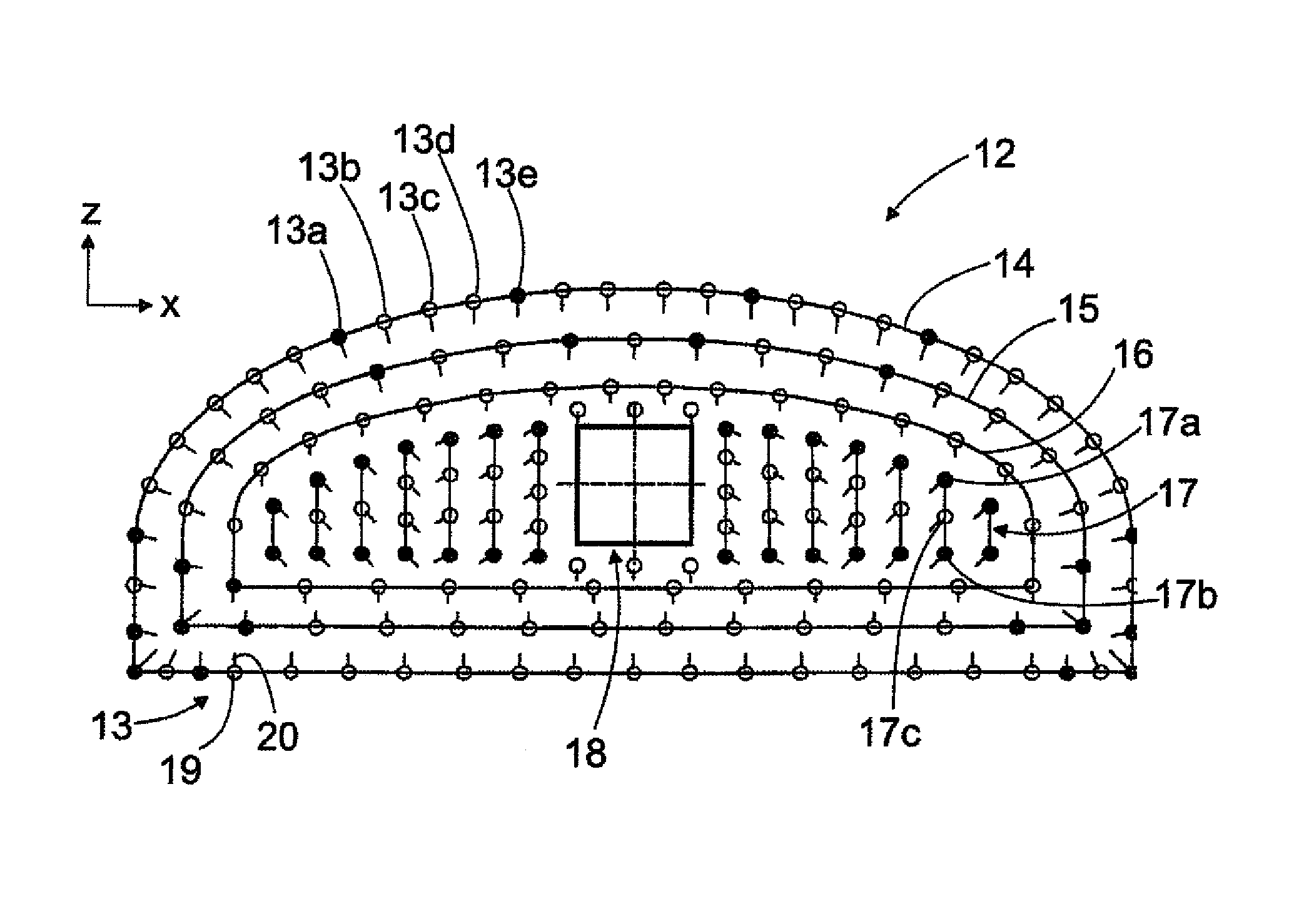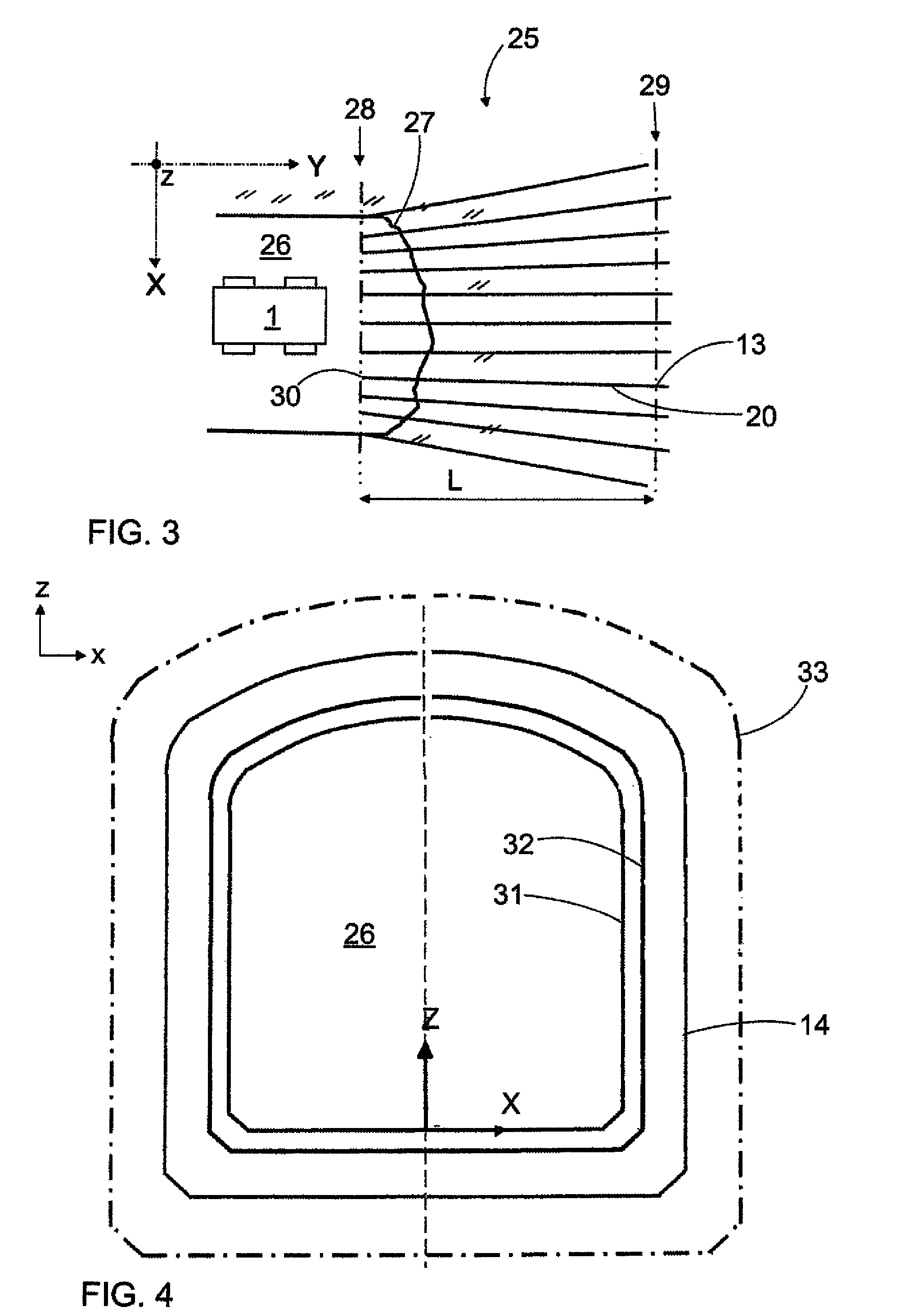Designing drilling pattern for excavating rock cavern
a drilling pattern and rock cavern technology, applied in the direction of process and machine control, instruments, computer control, etc., can solve the problems of insufficient accuracy in the blasting of a round, significant inaccuracy, etc., to achieve the effect of convenient addition and removal, convenient modification of locations and other properties, and versatile editing
- Summary
- Abstract
- Description
- Claims
- Application Information
AI Technical Summary
Benefits of technology
Problems solved by technology
Method used
Image
Examples
Embodiment Construction
[0052]FIG. 1 shows a rock-drilling rig 1 comprising a movable carrier 2, one or more drilling booms 3 and drilling units 4 adapted to the drilling booms 3. The drilling unit 4 comprises a feeding beam 5 for moving a rock-drilling machine 6 by means of a feeding device. Furthermore, the drilling unit 4 comprises a tool 7 for transmitting impacts issued by the percussion device of the rock-drilling machine to the rock to be drilled. The rock-drilling rig 1 further comprises at least one control unit 8 adapted to control actuators belonging to the rock-drilling rig 1. The control unit 8 may be a computer or a corresponding device and it may comprise a user interface and a display device, and control means for supplying commands and data to the control unit 8.
[0053]Typically, a drilling pattern 12 is designed for the drilling of each round, the pattern determining at least the locations of the holes to be drilled and their hole direction angles in the coordinate system of the drilling p...
PUM
 Login to View More
Login to View More Abstract
Description
Claims
Application Information
 Login to View More
Login to View More - R&D
- Intellectual Property
- Life Sciences
- Materials
- Tech Scout
- Unparalleled Data Quality
- Higher Quality Content
- 60% Fewer Hallucinations
Browse by: Latest US Patents, China's latest patents, Technical Efficacy Thesaurus, Application Domain, Technology Topic, Popular Technical Reports.
© 2025 PatSnap. All rights reserved.Legal|Privacy policy|Modern Slavery Act Transparency Statement|Sitemap|About US| Contact US: help@patsnap.com



